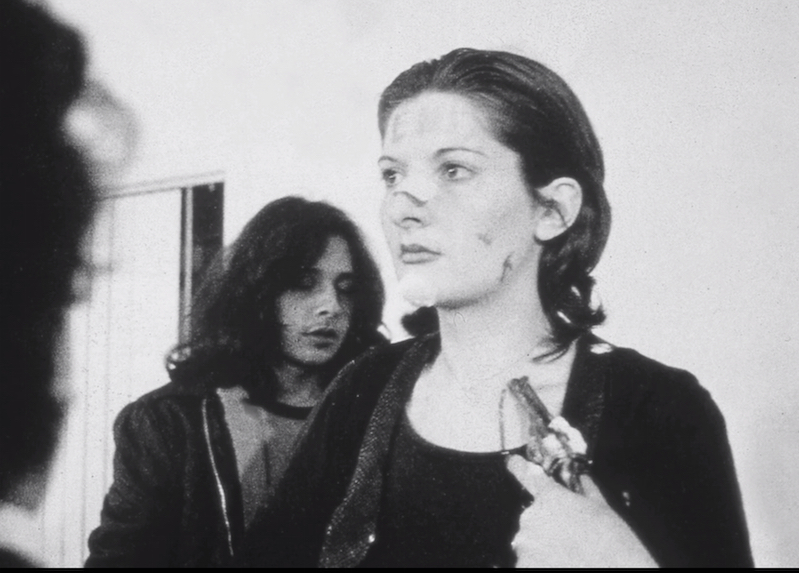 |
| Image Reference: Evarisitti, M. (2001). Helena. Retrieved from: http://artelectronicmedia.com/artwork/helena-by-marco-evaristti |
Mario Evaristti
Helena
2001
Goldish, Moulinex Optiblend 2000 Mixer
Mixed Media Installation
In today’s tutorial, we had each
brought a piece of artwork/design for the constructive critique exercise. Helena is an art installation from the
early 2000s and even though some time had elapsed since I first saw it in a
class back in Junior College, it’s still a piece that is very much etched in my
mind (maybe because of the shock effect that it had. I’m still not over the
trauma. I kid.)
Response
A goldfish. And a blender. Doesn’t
quite sound like complementary things, or in facts words that you would even
place together in a single sentence, but prolific contemporary artist Marco
Evaristti managed to. Consisting of mundane household items – a blender, a household
pet like the goldfish – confusion and disbelief will set in once you realise
the cruel dilemma behind Helena. Once
I got past the initial disgust and shock, I started to question the meaning
intended by the artist behind this artwork, and the moral/ethical implications
that plagued this complex paradigmatic setting.
Description
Consisting of 10 ordinary white
blenders filled with water and a live goldfish in each, Helena places its audience in the role of an arbiter of life and
death. Each mixer is visibly plugged in, with a bright yellow button ready for
anyone to press and turn the blender on, implying instant death for the
goldfish. From what I have gathered, one of the blenders was turned on by an
unidentified member of the audience one hour into the exhibition, turning into
a spectacle that was one of contemporary art’s most publicised legal cases as
the public and institutions were divided in a heated debate over ethics and
animal cruelty in art.
Analysis and Interpretation
Analysis and Interpretation
As the audience interacts with
Helena, it becomes almost a performative work of art, with the stage, an actor,
and the rest of the audience as impromptu causal actors. There are three
clearly defined roles: “The Sadist” (the person who chooses to push the
button), “The Voyeur” (the rest of the passive audience) and “The Moraliser”
(the police, and the animal rights protection groups who have taken up in arms
after the fish has been liquidised). Helena
questions the power humans have over animals, the double standards in society, and
is also a reflection of the human condition, of how humans respond in the face
of dilemma, tension, and morality.
I was also wondering why the artist
chose to title the piece Helena.
Further research showed that Helena referred to Helen of Troy, who sparked the
infamous Trojan war. Perhaps the artist was also trying to portray the loss of
beauty (goldfish) and innocence in the face of war (blender) and violence.
Evaluation and Judgment
Evaluation and Judgment
 |
| Image Reference: Abramovic, M. (1974). Rhythm 0. Retrieved from: https://media.boingboing.net/wp-content/uploads/2016/11/abramovich-rhythm.jpg |
| Image Reference: Hirst, D. (2007) Mother and Child (Divided). Retrieved from: http://www.tate.org.uk/art/artworks/hirst-mother-and-child-divided-t12751 |
While people may criticise
Evaristti for trying to jump on the “shock factor” bandwagon to garner attention
about his art (truthfully Helena reminded me very much of Marina Abramovic’s equally
controversial performance art piece Rhythm 0, and Damien’s Hirst works of
maniacal proportions), I can’t help but wonder if the significance and meaning
of Helena can still be conveyed if he had changed the medium of the work, as he
did in newer versions of Helena by using preserved goldfish specimens suspended
in jello instead of live animals. It prompts us to think about the necessity and
parameters of using animals in art and the double standards we subconsciously
hold. In all honesty, why do we get so riled up when a goldfish is killed
instantly in a humane manner, but are so indifferent to even worse acts of
violence against other animals and not to mention humans that happen on a daily
basis?
Note: I’m still very much trying to
figure out how to categorise my thoughts and opinions into the
Response-Description-Analysis&Interpretation-Evaluation&Judgment
framework… so this was a good exercise before the Tutorial 0B submission to get
the rusty cogs in my brain moving hahaha!
Comments
Post a Comment